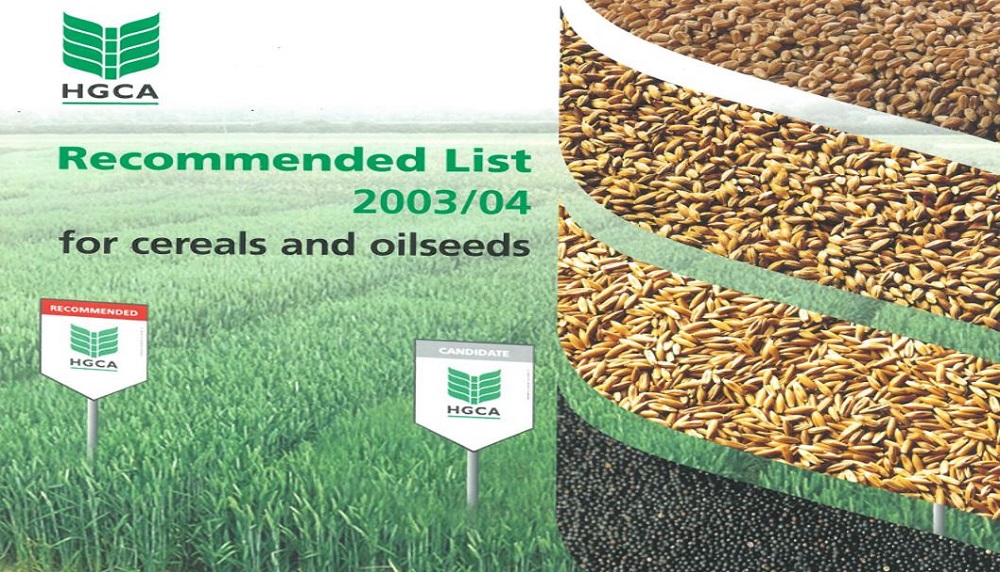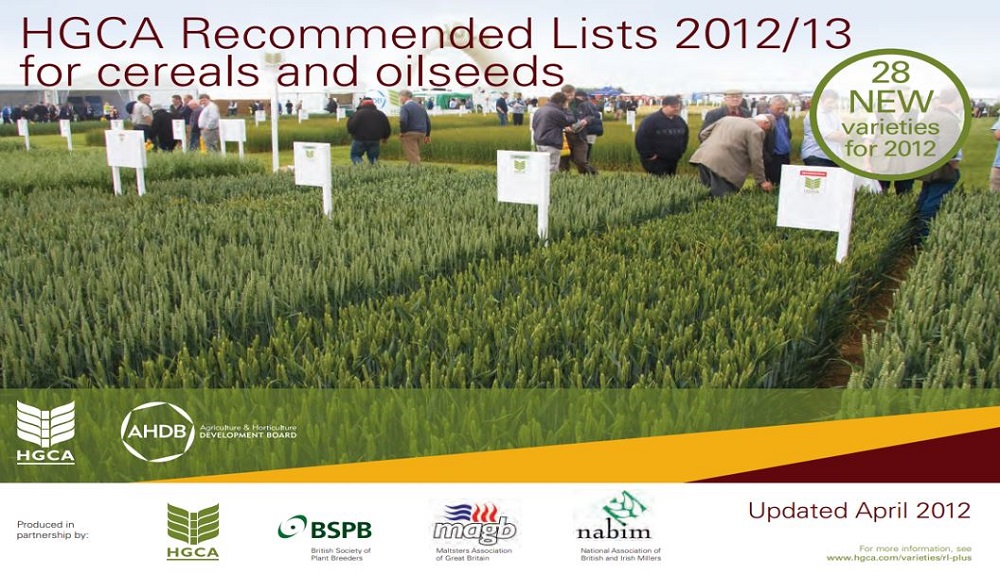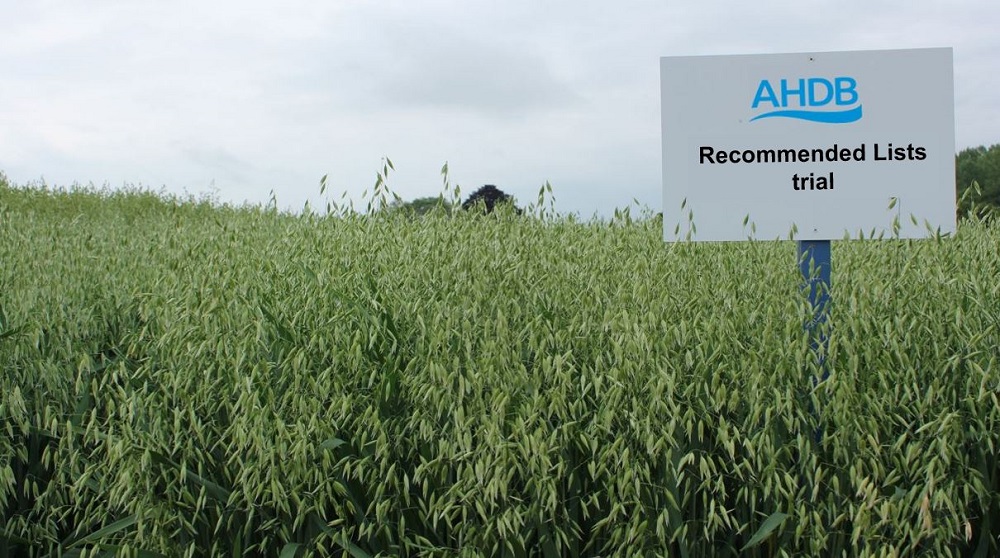A brief history of the Recommended Lists (RL)
Monday, 20 May 2024
The Recommended Lists for cereals and oilseeds (RL) has entered its eightieth year. Jason Pole explores the history of the long-lived lists.
A brief history?
The RL has delivered trusted, independent variety information since 1944. Over the intervening 80 years, it has evolved and adapted through many changes to farming and wider society. Although it is difficult to capture all the ins and outs in a single article (you’d probably need a book), it is possible to pen a potted history to chart some of the key developments.
1940s and 1950s
In August 1944, World War II continued to rage across the globe, but the end was in sight. Paris was liberated (25 August) and, as nations met in Washington DC to discuss proposals for a new international body that became the United Nations, thoughts turned to the post-war period and brighter times.
One ray of light for farming was the release of the first recommended list by the National Institute of Agricultural Botany (NIAB). Published 8 August 1944, it was a major milestone. Although restricted to a narrative description of winter wheat varieties for England and Wales, it gave farmers an evidence-based list to help them sift through the many (over 100) varieties available.
Despite being the first publication to carry the “recommended” brand, it is important to note that variety information was available prior to this (such as in NIAB’s Varieties of cereals for autumn sowing).
After the war, agriculture relentlessly focused on output. It was a catalyst for improvements in plant genetics and production practices. For example, the post-war period saw increased UK investment by overseas plant breeding companies. It also featured advances in chemistry, including the first synthetic herbicide in the UK (MCPA, 1946) and the introduction of the multi-site fungicide folpet (1952).
In 1952, the RL introduced the first 1–9 trait scoring system. It was part of developments that moved the lists from being primarily descriptive to primarily numerical. The RL increasingly helped to quantify the benefits (and weaknesses) associated with varieties, making it easier for farmers to back varieties most likely to succeed in their systems. It also started to underpin the rise of varieties that dominated the market (often for many years). In 1953, for example, two highly influential varieties were first listed: Capelle Desprez (winter wheat) and Proctor (spring malting barley).
The change to the varietal composition across the UK, combined with improvements in agronomy, culminated in big uplifts in yield in the second half of the twentieth century. In 1944, average commercial winter wheat yields were only about 2.5 t/ha – a long way behind today’s average of about 8.6 t/ha.
The first pages of the inaugural recommended lists (1944)
.JPG) AHDB
AHDB
Varieties of cereals for autumn sowing (1931)
.JPG) AHDB
AHDB
The 1960s
Several notable developments occurred in the mid-60s. In 1964, the Plant Varieties and Seeds Act established a royalty payment system for plant varieties (plant breeders’ rights). The Ministry of Agriculture, Fisheries and Food (MAFF) also commissioned NIAB to test varieties for distinctness, uniformity and stability (DUS) and to conduct statutory variety performance trials. The year also saw the broad-spectrum fungicide chlorothalonil introduced and Maris Widgeon wheat listed (still the variety of choice for thatching). The following year, 1965, saw the establishment of the Home-Grown Cereals Authority (HGCA) and the launch of winter oat Peniarth, which dominated the UK market for 25 years.
Early HGCA logo (1965)
.JPG) AHDB
AHDB
The 1970s
The 1970s kicked off with Norman Borlaug winning the Nobel Peace Prize for his leadership that contributed to extensive increases in global agricultural production, saving (by some estimates) a billion lives. This included the development of semi-dwarf wheat varieties, with the first true semi-dwarf wheat variety listed in the UK in 1976 (Maris Hobbit).
In 1973, the UK joined the European Common Market. Throughout the decade, common agricultural policy (CAP) incentives increasingly influenced what was produced (and how much was produced). As part of the European Community, the UK adopted the National Lists (NL) system for cereals that established a candidate variety’s value for cultivation and use (VCU) and generated extremely valuable trial data for the RL. Varieties usually go through at least two years of NL trials before being considered for the RL trials, with data only published once candidates are added to the NL. The NL system was eventually replaced (see the 2020s section).
Chemical advances in the 1970s included the introduction of glyphosate (1974) and azole fungicides (1976). Incredibly, the decade also saw UK Flour Millers (UKFM, known as nabim at that time) celebrate 100 years since its inaugural meeting in 1878. Even more impressive is that the Maltsters’ Association of Great Britain (MAGB) celebrated 150 years of representing the UK malting industry in 1977. The decade also brought major advances in single-low varieties that helped to underpin a major expansion of the UK oilseed rape area.
Recommended varieties of cereals (1975)
.JPG) AHDB
AHDB
The 1980s
The 1980s saw major changes in the way new varieties were produced and regulated.
In particular, 1986 was a big year, with the formation of the British Society of Plant Breeders (BSPB). The HGCA levy also began support of the RL, which coordinated investment in cereal trials across the UK. Also, in 1986, UK flour millers’ usage of home-grown wheat exceeded 80% for the first time, as breeding started to deliver better bread-making varieties for the UK. In the following year, the Cambridge-based Plant Breeding Institute (PBI) was privatised (sold to Unilever), marking the end of public-sector involvement in variety development in the UK.
In the USA, the first genetically modified (GM) crop was released (a virus-resistant tobacco). In the UK, the introduction of double-low oilseed rape varieties improved end-use quality for food and animal feed, fuelling the continued expansion of the crop. The decade also saw ever-closer integration of the RL and NL trial systems.
Recommended varieties of cereals (1986)
.JPG) AHDB
AHDB
The 1990s
The 1990s got underway with a broadening of HGCA’s scope to cover oilseeds (levy rate of 50p/tonne) and investment in variety evaluation across the UK, with the first UK list for cereals released in 1993.
In 1991, the International Union for the Protection of New Varieties of Plants (UPOV) convention recognised the right of plant breeders to collect royalties on farm-saved seed, with the first payments collected by BSPB in 1996.
The decade also saw the first HGCA strategic review of the RL (1996), strobilurin fungicides introduced into the UK (1997) and the arrival of the first fully restored oilseed rape hybrids (1996). HGCA also embraced the digital age, publishing the RL on its new website (which, thankfully, turned out to be immune to the millennium bug – like most of the internet).
UK recommended lists for oilseeds (1994)
.JPG) AHDB
AHDB
The 2000s
In 2001, as foot-and-mouth rocked the UK livestock sector, the full responsibility of the RL transferred from NIAB to HGCA. The same year saw the establishment of the Voluntary Initiative (VI) to allow the industry to self-regulate its use of pesticides (and avoid the introduction of a pesticide tax) and the publication of The Seeds (National Lists of Varieties) Regulations.
The first HGCA-produced RL was launched in 2002, which included Mendel – the first oilseed rape variety recommended for growing on clubroot-infected land. In addition, 2002 saw the launch of the harvest results service (by fax and email) to release RL trial information soon after it was gathered by the plot combines.
Following the formation of the Department for Environment, Food and Rural Affairs (Defra) in 2001, MAFF was formally dissolved in 2002. This year also saw strobilurins rocked by resistance, with the first septoria tritici isolates with much-reduced sensitivity to this chemistry identified in the UK (just five years after its introduction).
The following year, 2003, saw Robigus listed (in 2019, this would be named by NIAB as the most influential UK wheat variety from the past 100 years). HGCA distributed 33,000 copies of the RL (booklet and CD) and grew over 100 varieties at the Cereals Event – a feature (including plot tours) that became an event staple for almost 15 years. The same event saw the National Register of Sprayer Operators (NRoSO) launched on the VI stand, by the then-Defra Farming Minister Lord Whitty.
In 2004, HGCA introduced its classifications for wheat exports ukp (bread wheat) and uks (soft wheat). It also released an interactive variety tool (RL plus) that helped farmers interrogate 10 years of trial data. The year also saw the introduction of the first recommended winter wheat variety with resistance to wheat blossom midge (Welford). In 2008, HGCA became part of the Agriculture and Horticulture Development Board (AHDB Cereals & Oilseeds).
The following year, 2009, saw the arrival of the first semi-dwarf-type oilseed rape varieties. It also recorded the start of a series of alarming changes to the UK’s yellow rust pathogen population, which saw some dramatic changes in resistance ratings. For example, the yellow rust rating of winter wheat variety Oakley fell to just 2 (from 6), with the variety subsequently removed from trials.
Recommended Lists for cereals and oilseeds 2003/04
 AHDB
AHDB
The 2010s
The 2010s picked up where the previous decade left off. The wheat yellow rust pathogen population became increasingly diverse, following the arrival of the “Warrior race” in the UK (2011). Subsequent investigations revealed the race comprised a diverse population (which forced a new approach to naming races).
Some varieties became more susceptible to the disease, others withstood the invasion. The latter includes Crusoe (first listed in 2012) that maintains a resistance rating of 8 on the current (2024/25) list. The variety has had a good innings. Syngenta also launched the first SDHI fungicide (isopyrazam) for cereals in the UK in 2012, bringing improved septoria control, just as AHDB’s fungicide performance data was starting to clearly show the decline in activity of azoles against the disease.
The 2010s also saw a peak of innovation in oilseed rape breeding, with multiple new traits being introduced onto the RL. In 2013, DK Imagine CL became the first oilseed rape variety listed with a specific recommendation for tolerance to imidazolinone herbicides (a Clearfield® variety). In 2015, V 316 OL became the first HOLL (high oleic and low in linolenic acid) variety listed, which opened value in the food-oil markets. This was followed by Amalie in 2016, which became the first turnip yellows virus-(TuYV) resistant winter oilseed rape variety listed. Tempering the good news was the start of restrictions on the use of neonicotinoid seed treatments in 2013, marking the beginning of a major decline in oilseed rape crop areas.
Though average UK winter wheat yield peaked at 8.9 t/ha in 2015, rising costs, increasing resistance to crop protection products and tightening regulations saw a subtle shift in what farmers wanted from varieties and the RL. A survey of growers in 2018 saw disease resistance topping their priority list – a shift from a survey in 2011 that recorded fungicide-treated yield as the most important factor. These findings led to changes in RL recommendation processes that made it easier for varieties with lower yields but good disease resistance to get onto the lists.
Key varieties recommended included spring malting barley variety Laureate, which still dominates the malting market, Skyfall, which brought feed-wheat yields to the quality bread-making Group 1s, and KWS Extase, which had “exceptional untreated grain yield of 95% (compared with the treated control varieties)”.
At the end of the decade, AHDB launched a variety selection tool to provide a way to navigate, select and visualise trial data for winter (wheat, barley, oats and oilseed rape) and spring (barley and oats) crops.
Recommended Lists for cereals and oilseeds (2012/13)
 AHDB
AHDB
The 2020s
The current decade kicked off with the launch of the RL app, which adds value to the online tables and booklet by delivering the latest variety data to farmers’ fingertips. It replaced the pocketbook publications, following a request for more digital sources of information. Initially based on RL 2020/21 data, the app gets a major update each year, just after the release of the latest lists. Unlike its physical counterpart, it also gets minor updates throughout the year to include, for example, the latest candidate data.
Due to instability in rust populations, RL 2021/22 introduced major changes to wheat brown and yellow rust disease resistance ratings. It used weightings to give the most recent years’ results more influence, making the ratings more sensitive to changes in the pathogen population. The same edition also saw the first winter wheat variety (RGT Wolverine) with a specific recommendation for resistance to barley yellow dwarf virus (BYDV).
Following high levels of septoria tritici in the 2020/21 growing season and concerns about the breaking of resistance in varieties with Cougar in their parentages, AHDB issued the RL 2022/23 septoria tritici ratings early. We also revised the cereal lodging ratings to help pull apart varietal differences and make the ratings more representative of what is seen in the field and improve their consistency.
Since RL 2023/24, the tables for winter wheat have included information on young plant resistance to yellow rust. Some varieties are susceptible at the young plant stage but develop moderate to high levels of resistance later, after the adult plant stage resistance kicks in. In a season with high levels of yellow rust (like this year), it is good to know how well a variety resists the disease across its life cycle.
The UK officially “Brexited” at the start of the 2020s. One of the many ramifications was that new GB and NI Variety Lists (VL) officially replaced the NL system. It hasn’t had a major impact on the RL, but it has increased some costs and been occasionally inconvenient. It should settle down, with time.
Recommended Lists app
 AHDB
AHDB
The RL today
Over its lifetime, the RL has grown in scope and depth. It now involves several hundred trials each year, spread from Cornwall to Aberdeenshire, and delivers annually updated variety data for 11 crops in recommended and descriptive lists.
- Number of trial plots = 24,735
- Length of plots (combined) = 293 km (almost London to York)
- Width of plots (combined) = 47 km (almost Coventry to Worcester)
- Plot area (combined) = 54.4 ha (75 Wembley football pitches)
Note: figures based on AHDB-funded RL trials for harvest 2023.
AHDB has committed almost £10 million to the current five-year RL project phase (2021–26). However, the total project cost, which includes cash and in-kind contributions from breeders and processors, is closer to £25 million.
The evolution continues
In 2023, over 900 people responded to the latest RL review to direct the future of the variety trialling project.
This reconfirmed that the RL is widely used and highly valued, but it also identified that the RL needs to continue evolving over the short, medium and long term. An early development in response to the review was immediate changes to the current (RL 2024/25) booklet. Over 300 farmers and agronomists voted on alternative formats, with 72% opting for the same option, which provides the following advantages:
- Variety data can be viewed on a single page
- A new fold-out key provides at-a-glance information
- Agronomic information is in a more prominent position
- More information is included about the RL trial system and recommendation process
We have also strengthened our digital tools:
- A comparison feature added to the RL app
- A variety index tool published to show the year a variety was first and last listed
- Variety selection tool updated faster (with plans to develop a simpler “entry level” version)
With more resources directed towards digital tools, we will no longer produce the summer edition of the RL booklet. Compared to the winter (first) edition, demand for this edition was relatively low.
Low-input research
The latest RL review also identified areas of activity that require more time to action, including the need to explore how varieties perform under lower-input scenarios.
Most RL trials aim to limit the influence of (controllable) factors that may hold back genetic potential. For example, the fungicide programmes help minimise disease in treated trials and nitrogen is applied to maximise yield in feed varieties. The RL trials also test other extremes, such as in the fungicide-untreated trial series.
It is important to test the extremes. However, we are often asked to provide information more in line with commercial practice. It was a point raised again in the RL review responses. We have funded two three-month scoping reviews to examine evidence of varietal responses under lower-input scenarios (nitrogen and fungicides, respectively).
Sustainable varieties
The RL team will be at the Cereals 2024 event on the AHDB stand (526). The first day (11 June, 3:00pm) will feature a debate about delivering sustainable varieties, which will include the release of the initial results from the scoping reviews.
For the latest RL news, visit: ahdb.org.uk/rl
RL oats plots
 AHDB
AHDB


